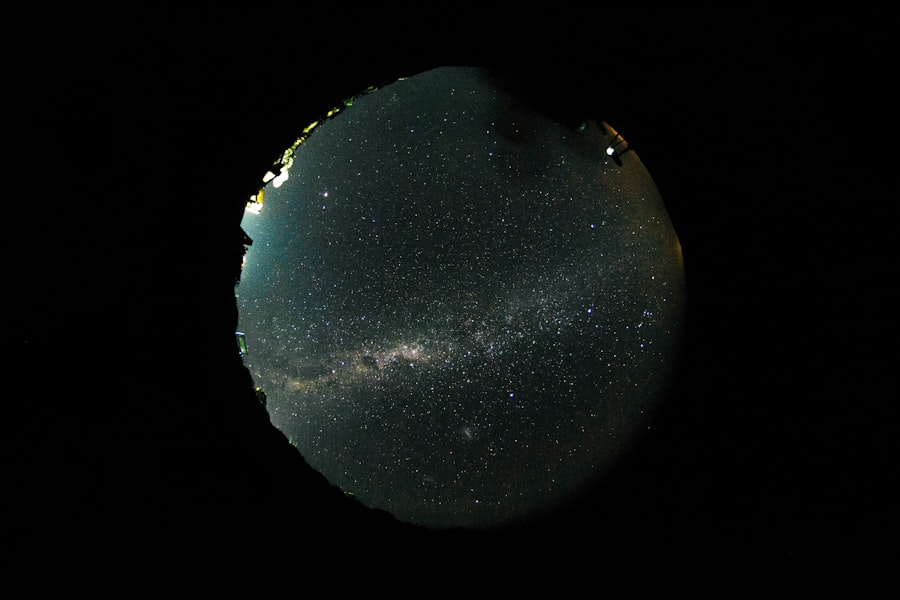Astrophysics is a branch of astronomy that employs the principles of physics and chemistry to understand how stars, planets, galaxies, and the universe itself behave. It seeks to unravel the mysteries of the cosmos, exploring phenomena that range from the life cycles of stars to the enigmatic nature of black holes and dark matter. The field has evolved significantly since its inception, driven by technological advancements and theoretical breakthroughs that have expanded our understanding of the universe.
Astrophysicists utilize a variety of tools, including telescopes that capture electromagnetic radiation across different wavelengths, particle accelerators that probe fundamental particles, and computer simulations that model complex cosmic phenomena. The significance of astrophysics extends beyond mere curiosity; it plays a crucial role in addressing fundamental questions about existence, the origins of the universe, and the potential for life beyond Earth. By studying celestial bodies and cosmic events, astrophysicists can glean insights into the laws of physics that govern not only the universe but also the very fabric of reality.
This discipline is inherently interdisciplinary, drawing from mathematics, chemistry, and even philosophy, as it grapples with concepts that challenge our understanding of time, space, and matter.
Key Takeaways
- Astrophysics is the study of the physical properties and dynamics of celestial bodies and the universe as a whole.
- Stars are born from the gravitational collapse of gas and dust, and their evolution is determined by their mass.
- Black holes are regions of spacetime where gravity is so strong that nothing, not even light, can escape.
- Dark matter and dark energy make up the majority of the universe’s mass and energy, but their nature remains a mystery.
- Galaxies are formed through the gravitational interaction of dark matter, gas, and stars, leading to the creation of diverse structures.
The Birth and Evolution of Stars
The Birth of a Star
This process marks the birth of a star, as hydrogen atoms fuse to form helium, releasing immense amounts of energy in the form of light and heat. The balance between gravitational collapse and the outward pressure from nuclear fusion defines a star’s stability during its main sequence phase, which can last billions of years.
Stellar Evolution
As stars evolve, they undergo various stages depending on their initial mass. Massive stars will eventually exhaust their hydrogen fuel and transition into red giants, where helium fusion occurs. This phase is characterized by significant expansion and cooling of the outer layers. In contrast, smaller stars like our Sun will shed their outer layers to form planetary nebulae, leaving behind a dense core known as a white dwarf.
The Ultimate Fate of a Star
The ultimate fate of a star is determined by its mass; while low-mass stars end their lives quietly as white dwarfs, massive stars may explode in spectacular supernovae, seeding the universe with heavy elements and potentially collapsing into neutron stars or black holes.
The Study of Black Holes

Black holes are among the most intriguing objects in astrophysics, representing regions in space where gravity is so strong that nothing—not even light—can escape their grasp. The concept of black holes emerged from Einstein’s theory of general relativity, which describes how massive objects warp spacetime. When a massive star exhausts its nuclear fuel, it can no longer support itself against gravitational collapse, leading to the formation of a black hole.
The boundary surrounding a black hole is known as the event horizon; once crossed, escape becomes impossible. Astrophysicists study black holes through indirect methods, as they cannot be observed directly. One common approach involves examining the behavior of nearby stars and gas clouds.
For instance, when material spirals into a black hole, it forms an accretion disk that heats up due to friction and emits X-rays detectable by space-based observatories. The supermassive black hole at the center of our Milky Way galaxy, known as Sagittarius A*, has been studied extensively through this method. Observations have revealed its mass to be approximately four million times that of our Sun, providing critical insights into the dynamics of galaxies and the role black holes play in their evolution.
The Exploration of Dark Matter and Dark Energy
| Topic | Dark Matter | Dark Energy |
|---|---|---|
| Definition | Non-luminous matter that is thought to make up about 27% of the universe’s mass-energy density | The mysterious force causing the universe’s expansion to accelerate |
| Properties | Does not emit, absorb, or reflect light; interacts gravitationally | Causes the universe’s expansion to accelerate; its nature is unknown |
| Discovery | Indirect evidence from galaxy rotation curves, gravitational lensing, and cosmic microwave background | Discovered through observations of distant supernovae and cosmic microwave background |
| Research | Studied through astronomical observations, particle physics experiments, and simulations | Investigated through astronomical surveys, theoretical modeling, and cosmological simulations |
Dark matter and dark energy are two of the most profound mysteries in modern astrophysics. Dark matter is an invisible substance that does not emit or interact with electromagnetic radiation, making it undetectable by traditional means. However, its presence is inferred from gravitational effects on visible matter.
For example, observations of galaxy rotation curves reveal that stars at the edges of galaxies rotate at speeds that cannot be explained solely by the mass of visible matter; thus, dark matter is believed to constitute about 27% of the universe’s total mass-energy content. In contrast, dark energy is an even more elusive phenomenon responsible for the accelerated expansion of the universe. Discovered through observations of distant supernovae in the late 1990s, dark energy is thought to make up approximately 68% of the universe’s total energy density.
Its nature remains largely unknown; various theories propose it could be a cosmological constant or a dynamic field that changes over time. Understanding dark matter and dark energy is crucial for constructing accurate models of cosmic evolution and addressing fundamental questions about the fate of the universe.
Understanding the Formation of Galaxies
Galaxies are vast collections of stars, gas, dust, and dark matter bound together by gravity. Their formation is a complex process that began shortly after the Big Bang when small fluctuations in density led to gravitational instabilities. Over billions of years, these instabilities allowed matter to clump together, forming primordial galaxies.
The study of galaxy formation involves understanding both large-scale structures and smaller components like star clusters and nebulae. Astrophysicists categorize galaxies into several types: spiral galaxies like the Milky Way, elliptical galaxies that are more rounded and featureless, and irregular galaxies lacking a distinct shape. Each type has unique characteristics influenced by factors such as star formation rates and interactions with other galaxies.
Observations using advanced telescopes like Hubble have revealed intricate details about galaxy formation and evolution across cosmic time scales, providing insights into how galaxies grow and interact.
The Search for Exoplanets and Alien Life

Detecting Exoplanets
Various methods are employed to detect exoplanets. The transit method observes dips in starlight as planets pass in front of their host stars, while radial velocity measurements detect wobbles in stars caused by orbiting planets.
Assessing Exoplanet Atmospheres
The search for alien life extends beyond merely finding exoplanets; it involves assessing their atmospheres for biosignatures, chemical indicators that suggest biological processes. Missions like NASA’s Kepler Space Telescope have identified numerous Earth-sized planets within their star’s habitable zone, the region where conditions might allow liquid water to exist.
The Search for Biosignatures
The ongoing James Webb Space Telescope mission aims to analyze exoplanet atmospheres in unprecedented detail, searching for molecules like oxygen or methane that could indicate biological activity.
The Role of Astrophysics in Understanding the Universe
Astrophysics serves as a vital tool for comprehending not only celestial phenomena but also fundamental principles governing nature itself. By studying cosmic events such as supernovae or gamma-ray bursts, astrophysicists can test theories related to nuclear physics and high-energy processes. Furthermore, astrophysics provides insights into cosmology—the study of the universe’s origin, evolution, and ultimate fate—by examining cosmic microwave background radiation and large-scale structures.
The implications of astrophysical research extend beyond academic curiosity; they influence technology development and inspire future generations. Innovations born from astrophysical research have led to advancements in fields such as materials science, telecommunications, and medical imaging technologies. Moreover, understanding our place in the cosmos fosters a sense of connection among humanity as we grapple with existential questions about life’s purpose and our responsibility toward Earth.
The Future of Astrophysics Research
The future of astrophysics research promises to be an exciting era marked by technological advancements and interdisciplinary collaboration. Upcoming missions such as NASA’s Artemis program aim to return humans to the Moon while laying groundwork for future Mars exploration. These endeavors will not only enhance our understanding of planetary science but also provide opportunities for astrobiological studies on other celestial bodies.
Moreover, advancements in computational astrophysics are enabling researchers to simulate complex cosmic phenomena with unprecedented accuracy. Machine learning techniques are being employed to analyze vast datasets generated by telescopes and observatories, allowing for more efficient identification of celestial objects and patterns within data. As we continue to push the boundaries of knowledge through innovative research methods and collaborative efforts across disciplines, astrophysics will undoubtedly remain at the forefront of humanity’s quest to understand the universe and our place within it.
If you are interested in delving deeper into the world of Astrophysics, you may want to check out this article on





















+ There are no comments
Add yours